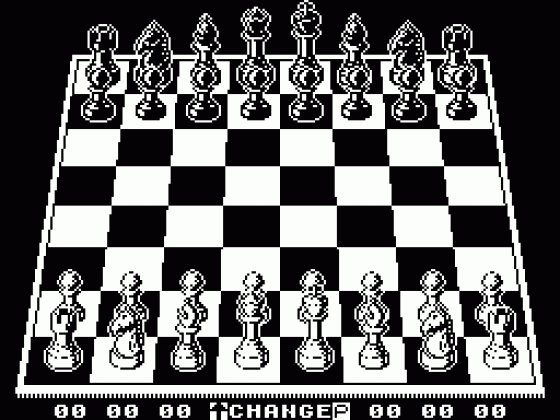Other Reviews Of Psi Chess For The Spectrum 48K
Psi Chess (The Edge)
A review by Gwyn Hughes (Your Sinclair)
Psi Chess (The Edge)
Spectrum Chessmen have never looked so good. Psi chess goes for a visual as well as intellectual appeal
Psi Chess (The Edge)
A review
Psi Chess (The Edge)
A review


 8th July 1986
8th July 1986












